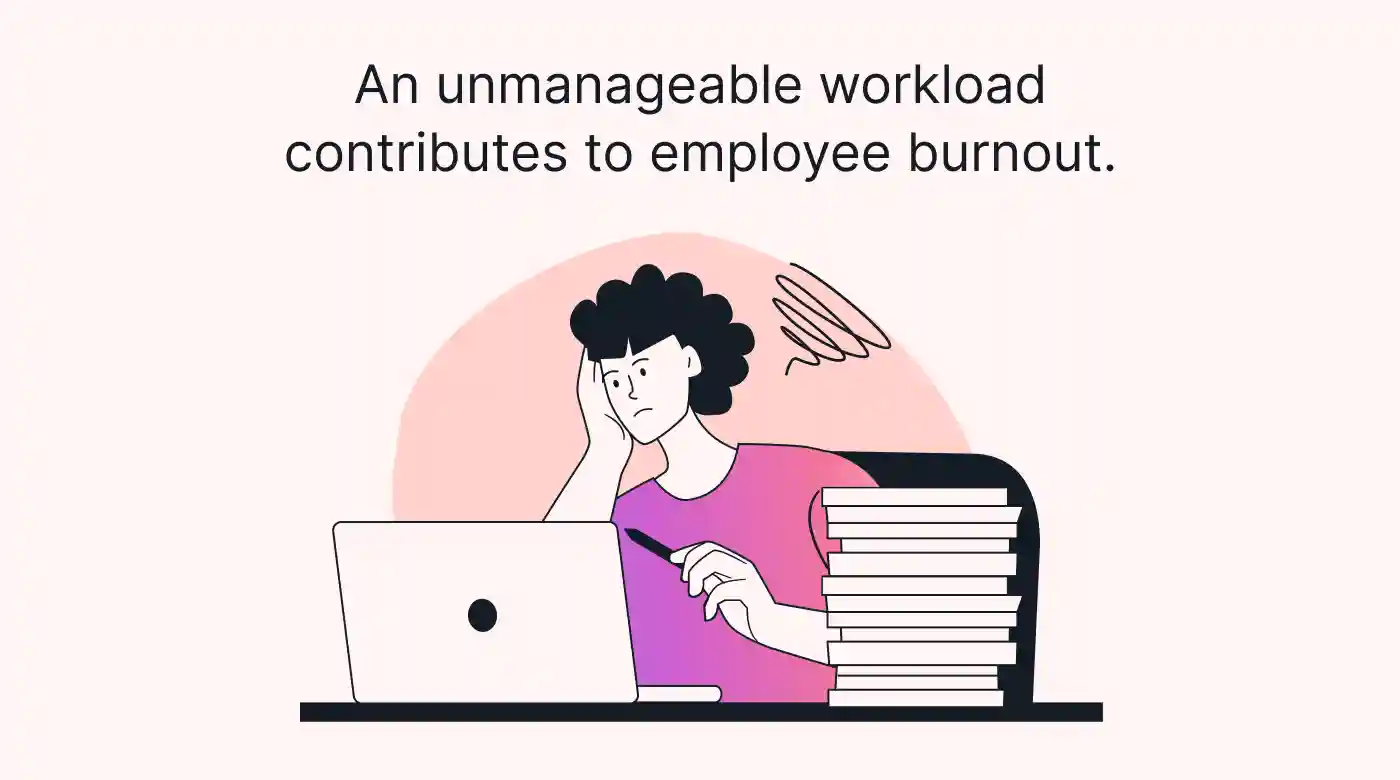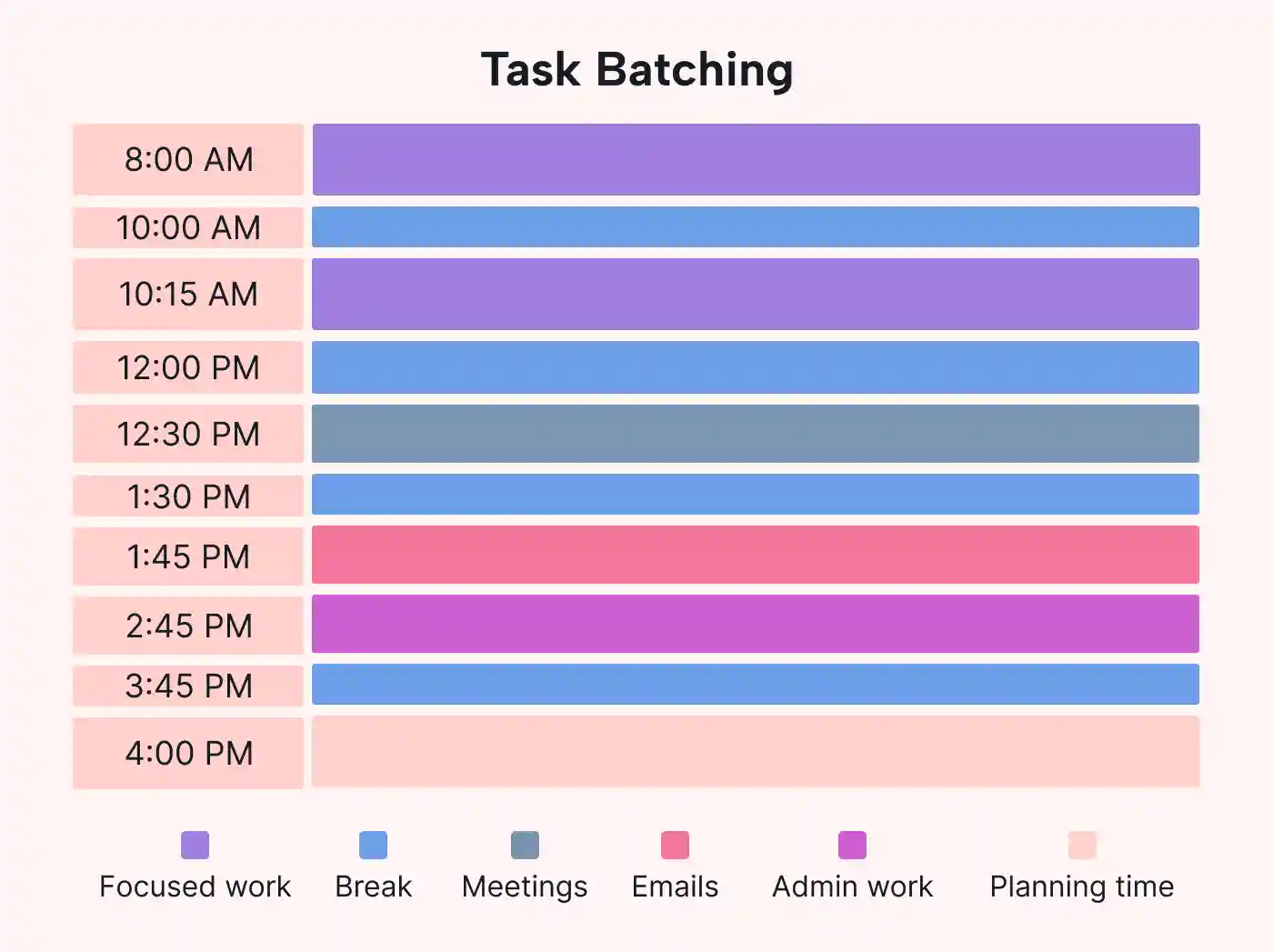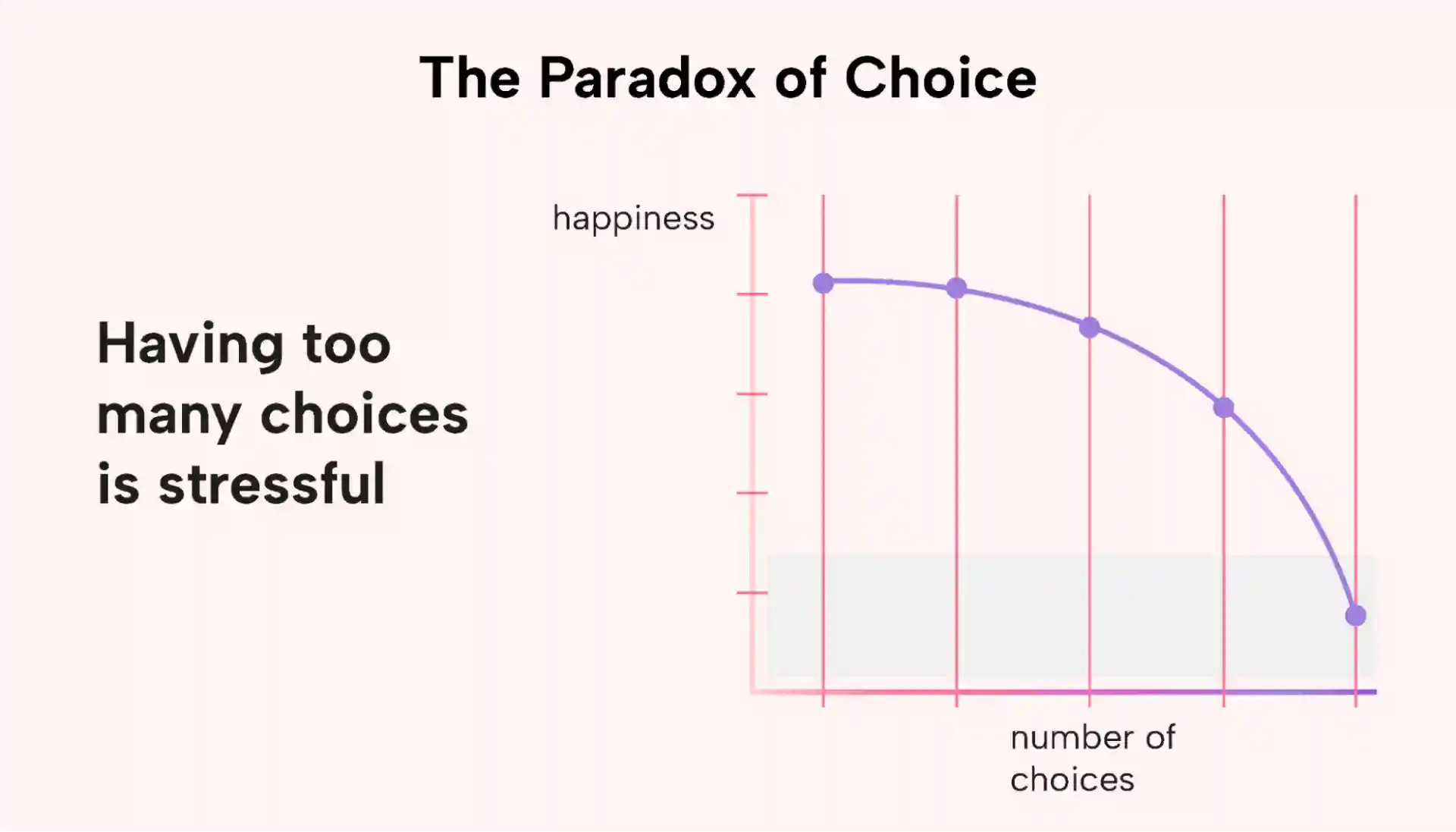Ask any business person or project manager what their biggest challenges are, and productivity is almost always guaranteed to make the list. And usually their own productivity as well as that of their employees.
It's pretty certain that, over the years, they have worked out a system to improve their own performance. It'd have been instinctive and likely to be some form of task prioritization or batching. But it probably wasn't as successful as they'd hoped.
There's a reason for that: It wasn't systemized. That's the secret to task batching. It's a system of grouping and tackling similar tasks in one time block. That's what makes it such a brilliant productivity hack.
In this article, we'll unpack this idea and show you how you can supercharge your productivity with task batching. And it may work for your team, too.
Benefits of task batching
Because you’re dealing with similar tasks in each chunk of time, you can avoid mental strain and decision fatigue from constantly switching between unrelated tasks. This approach has many benefits, but we’ll focus on those more closely related to productivity, time management, and better work-life balance.
Increased focus
If you’ve grouped your individual tasks correctly, your task batching makes it more likely that you can get yourself into a flow state. That’s when you’re so completely immersed in what you’re doing that you may lose track of time or ignore outside distractions.
This is the kind of focus that’s possible with effective task batching. It lets your brain filter out distractions and truly focus on the single task you’re working on. And it means that you’re using your brain to its maximum potential.
Stress reduction
Cortisol is the stress hormone, and constant interruptions or a constant cycle of switching between tasks elevates your levels. Research shows high cortisol levels are detrimental to mental and physical health, and one recent study linked burnout directly to elevated cortisol levels.
Batching tasks minimizes interruptions in your workday. That helps lower your stress levels and reduce your chances of burnout. You can concentrate on a single subject because you’ve batched similar individual tasks together.
Task batching can also balance your workload, increasing work satisfaction. And that’s a good thing. A recent paper found job satisfaction to increase both current life self-evaluation scores (14%) and future scores (8%) of that measure.
Discourages procrastination
Nobody will argue that procrastination isn’t a significant enemy of productivity. We’ve all been there, especially when there are daily tasks you need to do that you’re just not in the right frame of mind to tackle. Mental fatigue is the most common reason.
But whatever the cause, you need to find a way around it, and task batching could be your salvation. It helps you focus on the important work and forces you to schedule time for each task. This turns the mountain of work that faces you into a bunch of little molehills to reverse the popular idiom. And that helps you conquer procrastination.
Improved productivity
The headline benefit of task batching is increased productivity and efficiency. When you can organize your day according to workflow and tasks, you’ll be more focused and likely to enter a flow state. You do this by allocating specific blocks of time for related tasks. For example, you might allocate a time block for responding to emails, making calls, or completing data capture.
Also, when focusing on similar tasks, you can optimize your mental resources and manage your energy levels more effectively. That helps to keep distractions at bay and will always lead to a higher quality of work and faster completion times.
Enables deep work
Task batching benefits above help you to embrace deep work. Cal Newport coined the term in his 2016 book. It relates to high-quality cognitive work that demands a deep focus, exceptional creativity, and problem-solving.
There are three key aspects of deep task work:
- It requires an intense and undistracted focus
- It enables incredible problem-solving, critical thinking, and creativity
- It results in tremendous productivity and quality work product
Single-tasking vs. multitasking
Many of us have bought into the fallacy that multitasking helps us complete more work in a shorter time. The opposite is true: if we constantly switch between tasks, especially completely different ones, our productivity and work quality will decrease.
It takes a while to find your focus again when you’re switching from task to task. Research indicates that it takes precisely 23 minutes (PDF). That’s probably an average because it depends on the tasks you’re switching from and to. Whatever the actual number, multitasking wastes your valuable time.
Task batching vs. time blocking
There’s a major misconception about task batching: It’s NOT the same as time blocking. While the names may be similar, and confusingly so, they’re two completely different techniques.
When you batch tasks, you’re pulling together similar kinds of work during a specific block of time. You do that to avoid using the valuable mental energy you'd lose if you constantly switched between different types of tasks.
By contrast, time blocking is about scheduling time in advance for you to tackle the most critical items on your to-do list.
4 steps to successful task batching
A task batching session isn’t something you’ll jump into head-first and immediately get right. There are too many variables to your workday. It requires practice and begins by creating a new habit: scheduling your day every day.
Step 1: Set your priorities
When you sit down at your desk with your cup of coffee (or other beverage of choice), you should look at your to-do list first. What do you need to get done today? If you don’t have a to-do list, now’s the time to make one. It’s also when you break large and complex tasks up into smaller, simpler ones.
Once you know what to do, you’ll prioritize the tasks. What work must be done today, and what work can wait until tomorrow or next week?
Step 2: Categorize your tasks
Now, you need to group your prioritized tasks based on their type. It’s not important how you categorize them, just as long as they are similar in some way and that it works for you. You could use any of several categories, such as:
- Messaging (email, Slack, workflow applications, etc.)
- Meetings and workshops/webinars
- Project planning and management
- Analysis and reporting
- Feedback sessions
- Brainstorming and strategizing
Think of them as buckets. Your job early on is to decide which bucket each task on your to-do list belongs in.
Step 3: Set workable time bands
This is the tricky part. You should always try to bookend buckets of tasks that need deep concentration with chunks of time involving more mundane or repetitive tasks. This is also where you should consider how much time you should allocate to each task and the group of tasks.
Be warned that humans underestimate the time required to complete a task because we tend to be optimistic about our abilities. This is known as the planning fallacy, but over time and with practice, you’ll get better at figuring out how long you’ll take to do different tasks. Always try to overestimate how long it’ll take.
Step 4: Get cracking on your batches
This is the easy part. Having done all that planning, you get cracking with your grouped tasks as you planned them. But it’s also where you need to develop another habit if you don’t already do it. You must keep track of and note how long each task takes you. That’ll be useful information for your planning tomorrow and into the future.
Mistakes to avoid
There are several pitfalls lying in wait as you embark on task batching, and you’d be well advised to avoid them if you can. And if you’ve already begun the journey, it might be that you’ve already encountered some of them.
Analysis paralysis
If you feel you’re spending too much time on planning and are struggling to get going when the work should begin, you’ve probably got analysis paralysis. If you haven’t already, schedule a time for your morning planning as a task in your diary.
Treating it as another task could motivate you to get through it because it’ll be the first task you can tick off daily. Use tricks like bullet points instead of lengthy descriptions. Also, make sure you have a quiet room to do your planning.
Some tasks can’t be batched
One reason you may have fallen victim to analysis paralysis is that some jobs can’t be batched or shouldn’t be batched with others. A good rule of thumb is to avoid putting more than one complex task in a batch, even if the tasks are similar.
Cognitively demanding tasks need an appropriate task set (PDF) — information, plans, procedures, and knowledge. That’s why it’s better to put each complex task in its own batch.
Useful tips and tricks
The most obvious tip is to capture your batches in your calendar. This will mean that coworkers can see you’re busy and avoid unnecessarily interrupting you.
You could color-code them. For example, it tells team members that a red block in your calendar means focus time. They should only interrupt you for a life-and-death emergency. Also, don’t take phone calls and turn off or pause notifications on all your devices.
Break down big tasks
We touched on this before. There’s nothing more likely to inspire a fit of procrastination than a massive mountain of work waiting to be done. You also can’t or shouldn’t create a batch of tasks that’ll take a large chunk of time out of your day.
So break it down into smaller, executable tasks and tackle them one by one over a few days or weeks, as your deadline allows.
Take breaks
This is important. Science tells us that the average adult can only concentrate on a task for about 15 to 20 minutes. That’s not to say that you can’t batch a bunch of tasks into a one- or two-hour slot.
You must take periodic, short breaks to keep your mind fresh and focused. It also doesn’t have to be dead time — it could be a simple, mundane task sandwiched between two more complicated ones.
Reward yourself
Sometimes, you need an incentive to get things done. This is especially true when the task at hand is grueling or mundane. Granting yourself rewards at certain stages helps you stay focused and energized.
And they don’t have to be massive rewards. Something small like a chocolate bar, a soda, a snack, a music video, or even a short break gives your mind something positive to associate with the troublesome task.
Leave wiggle room
Recall the planning fallacy. That’s why you should always give yourself some wiggle room in your deadlines. If you're unsure, estimate how long it’ll take and then add a bit extra, sometimes a lot extra.
And then there are the unexpected things that pop up on any given day. Adding some wiggle room will allow you to attend that unplanned meeting or deal with the office emergency. Also, try to leave a period of time between batches to act as a buffer.
Outsource some tasks
As much as you may want to, you can’t do it all and build a successful business. Part of that is knowing which jobs you can handle, which you’ll struggle with, and which simply wastes your precious time.
When outsourcing is indicated, do it. It could be a mundane task to a digital assistant that could grow an employee or need specialist skills or knowledge. Not doing everything isn’t a weakness. It’s a strength because you’re spreading the load.
Use task management software
One way to hugely simplify and even automate aspects of task batching is to use task manager software. Motion is the best AI-based task manager available right now. It takes all the details you capture, like task priorities, due dates, and assignees, and automatically creates a schedule to ensure you complete them in time.
The Pomodoro Technique
If you’re battling to complete your batched tasks within the allotted time, you’re either not allocating enough time or losing concentration midway. The Pomodoro Technique is a way around this. It involves setting a timer or the stopwatch feature on your phone to set work intervals.
For every 25 minutes of work you do, you should take a 5-minute break. You can repeat this cycle three or four times before you'll need a longer 20-30-minute break. As long as you're working on similar tasks, it should help your concentration.
Get your task batching in Motion
If you're seriously considering task batching, you'll need a calendar. And what's better than an AI-powered one that can help you get on top of and speed up your scheduling and organizing work every morning?
You can think of it as that super-organized buddy who's always got your back. It'll warn you if a deadline seems too tight and add tasks to your team members' calendars when you want to outsource a task. And when the unexpected happens, Motion can reshuffle your task list without you having to do a thing.
When you begin your task-batching journey, start your 7-day free trial with Motion simultaneously. You'll be astonished at the results.

After 40-odd years of working in technology, project management, media, and marketing, Brian's career and growth journey has exposed him to a wide range of niches. He brings this breadth of knowledge and expertise in his content work through enriched storytelling and original concepts that make SaaS content engaging and accessible for readers of all stripes.








